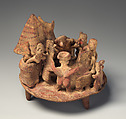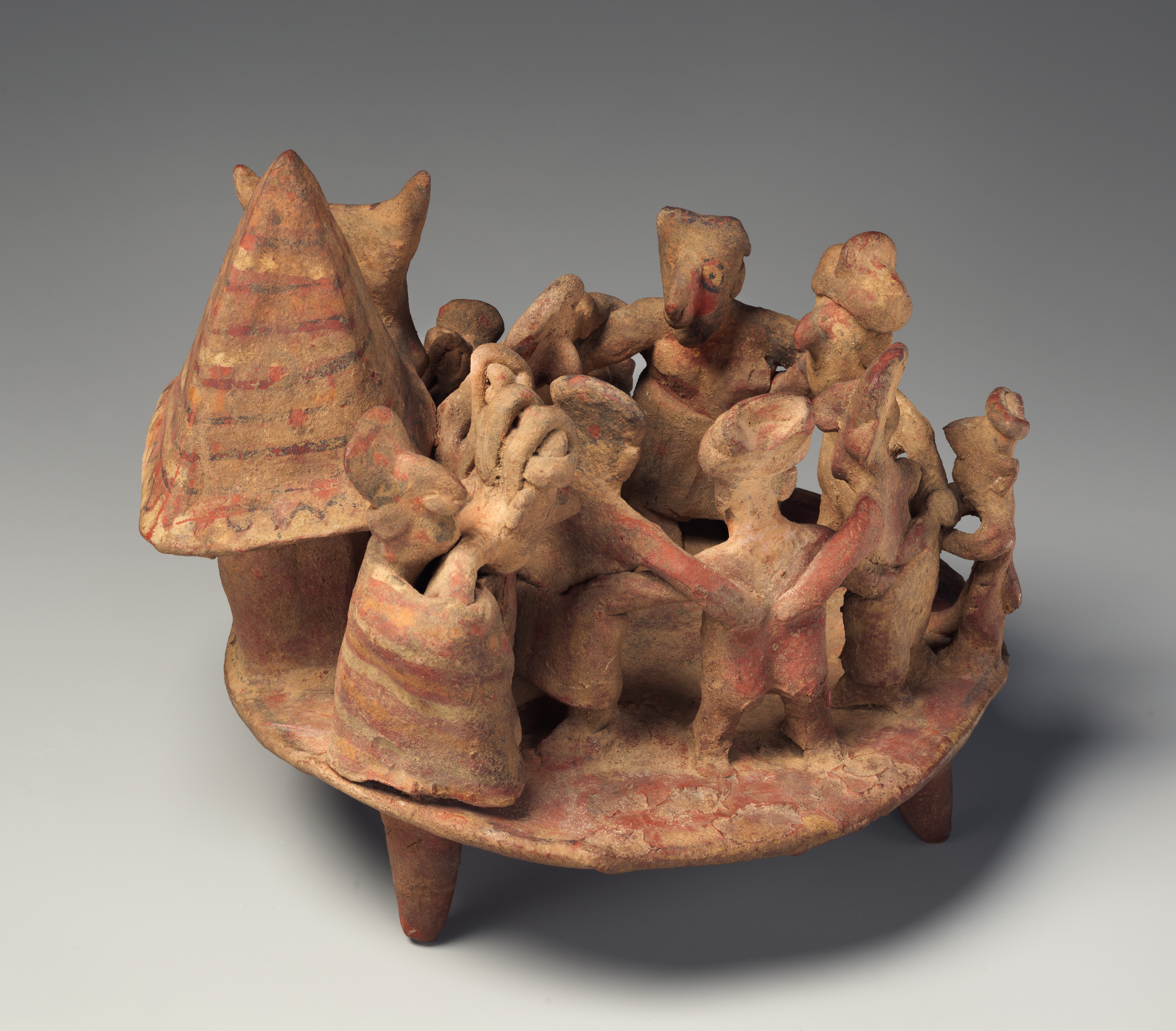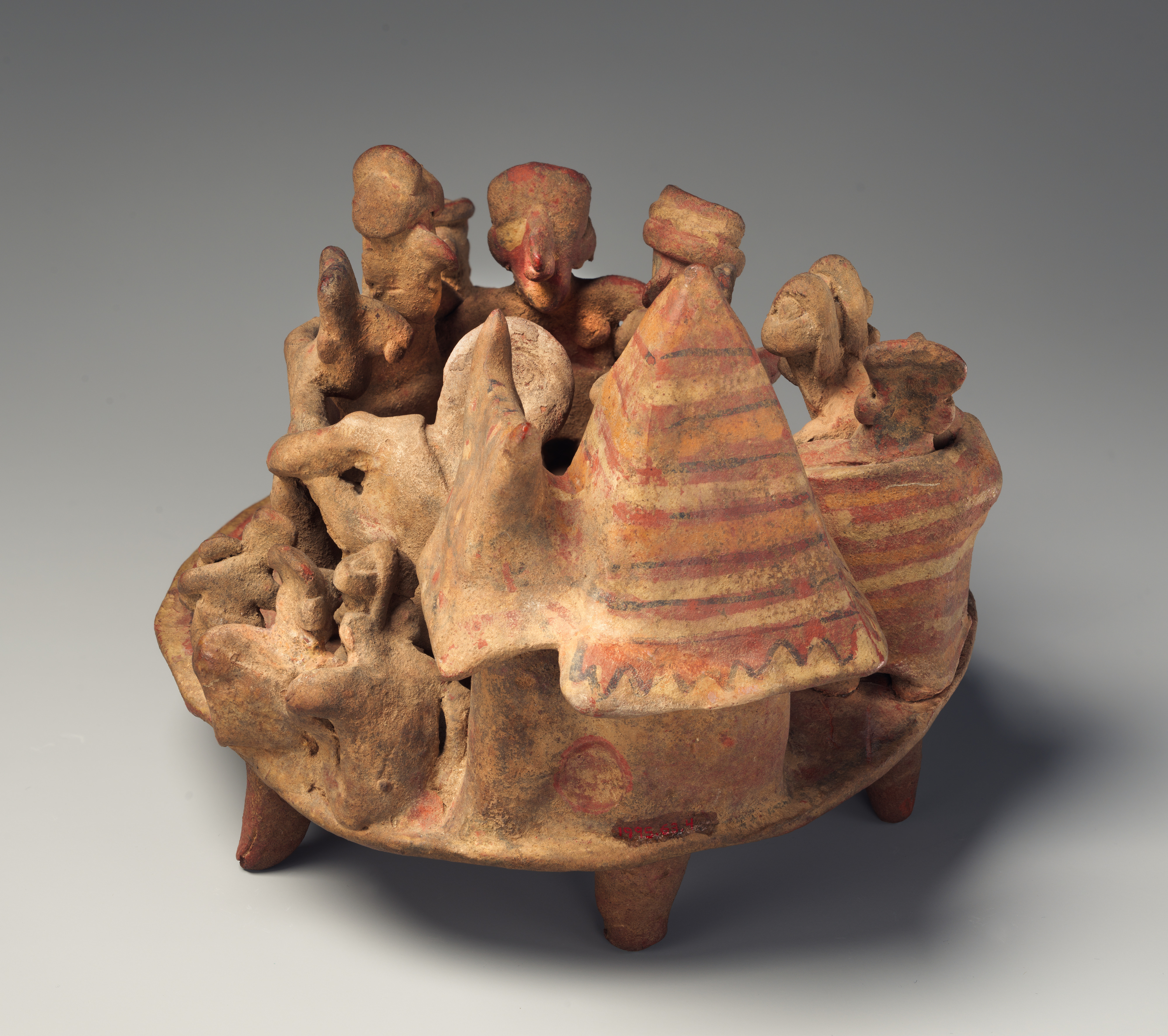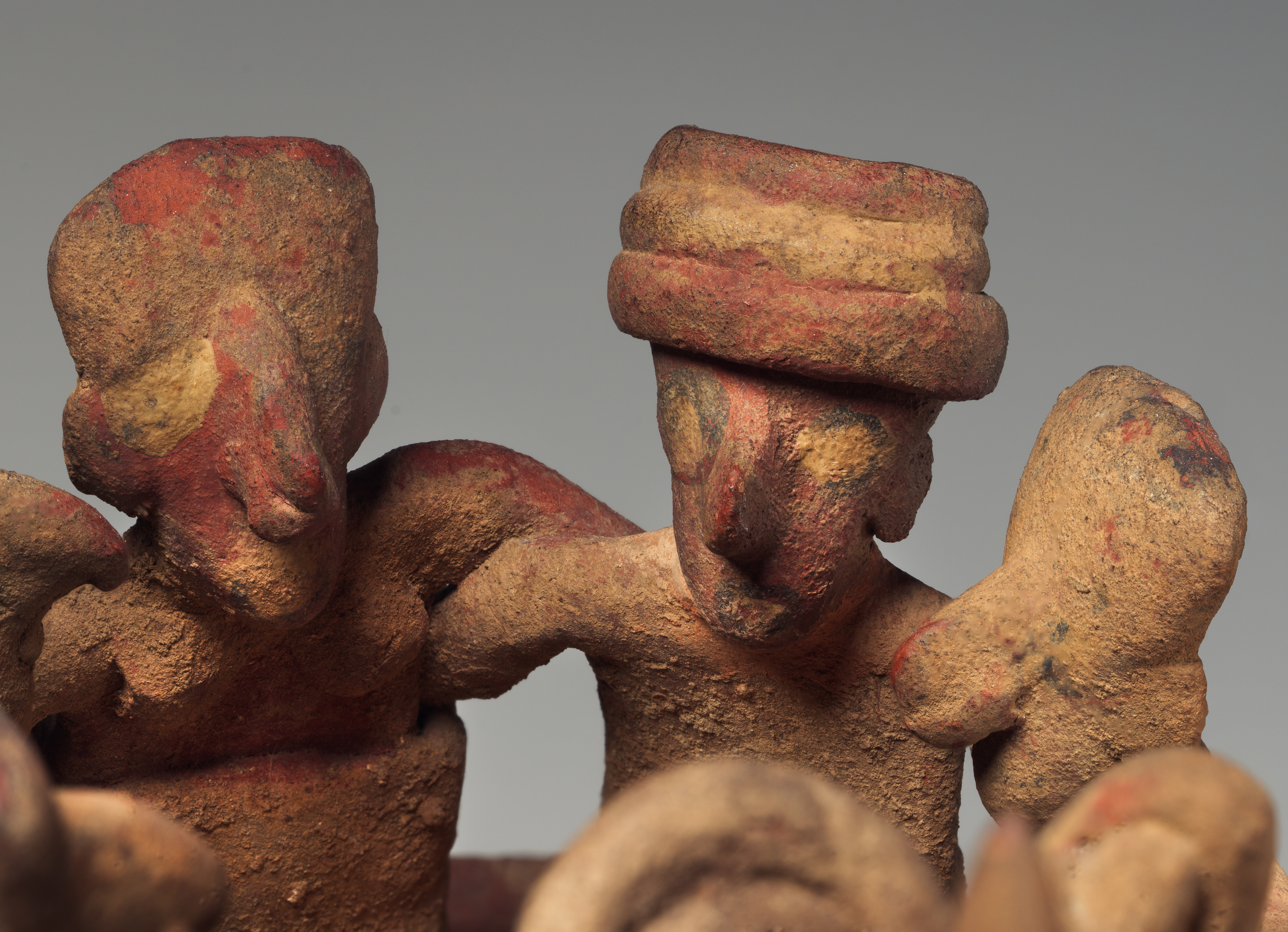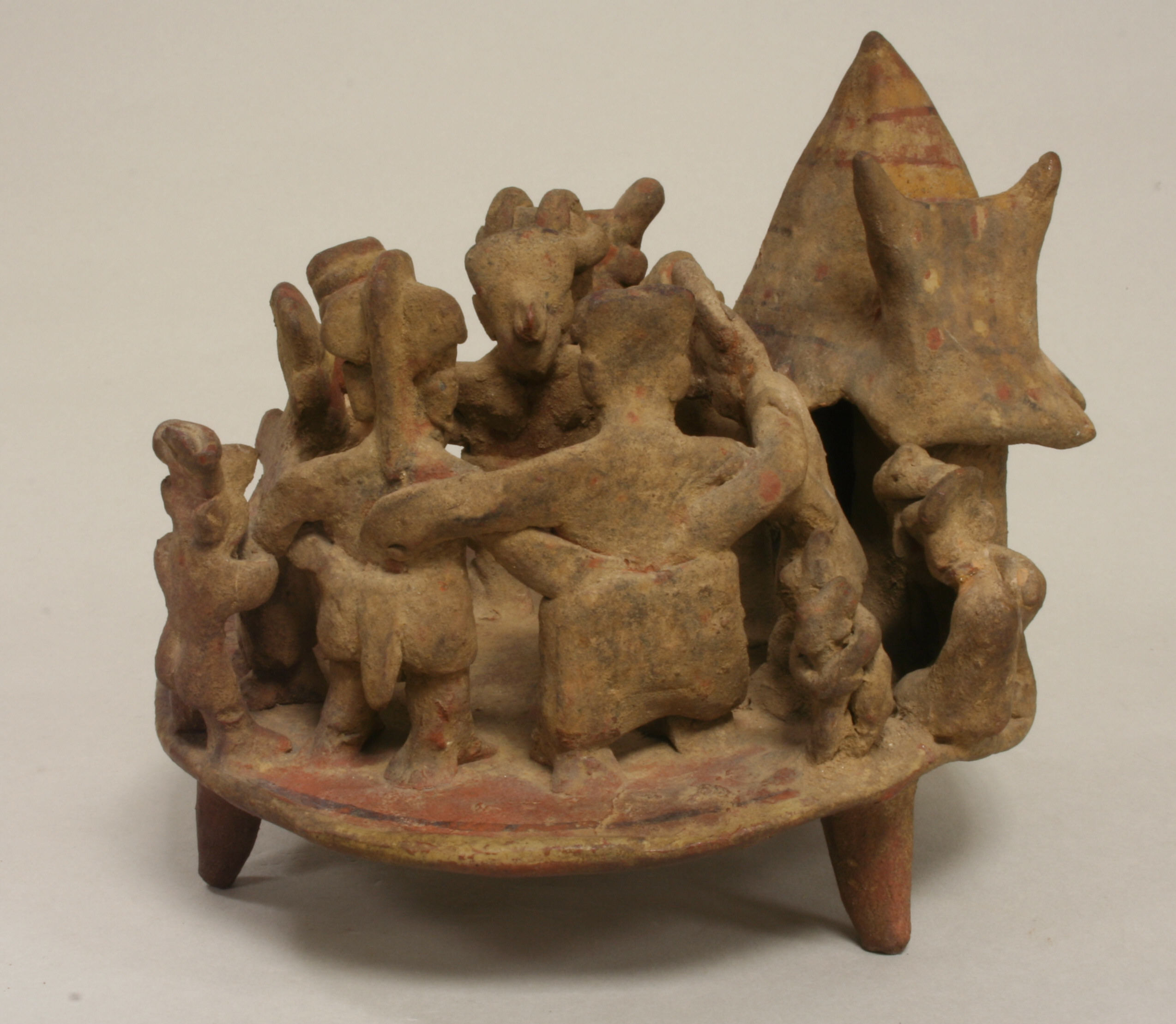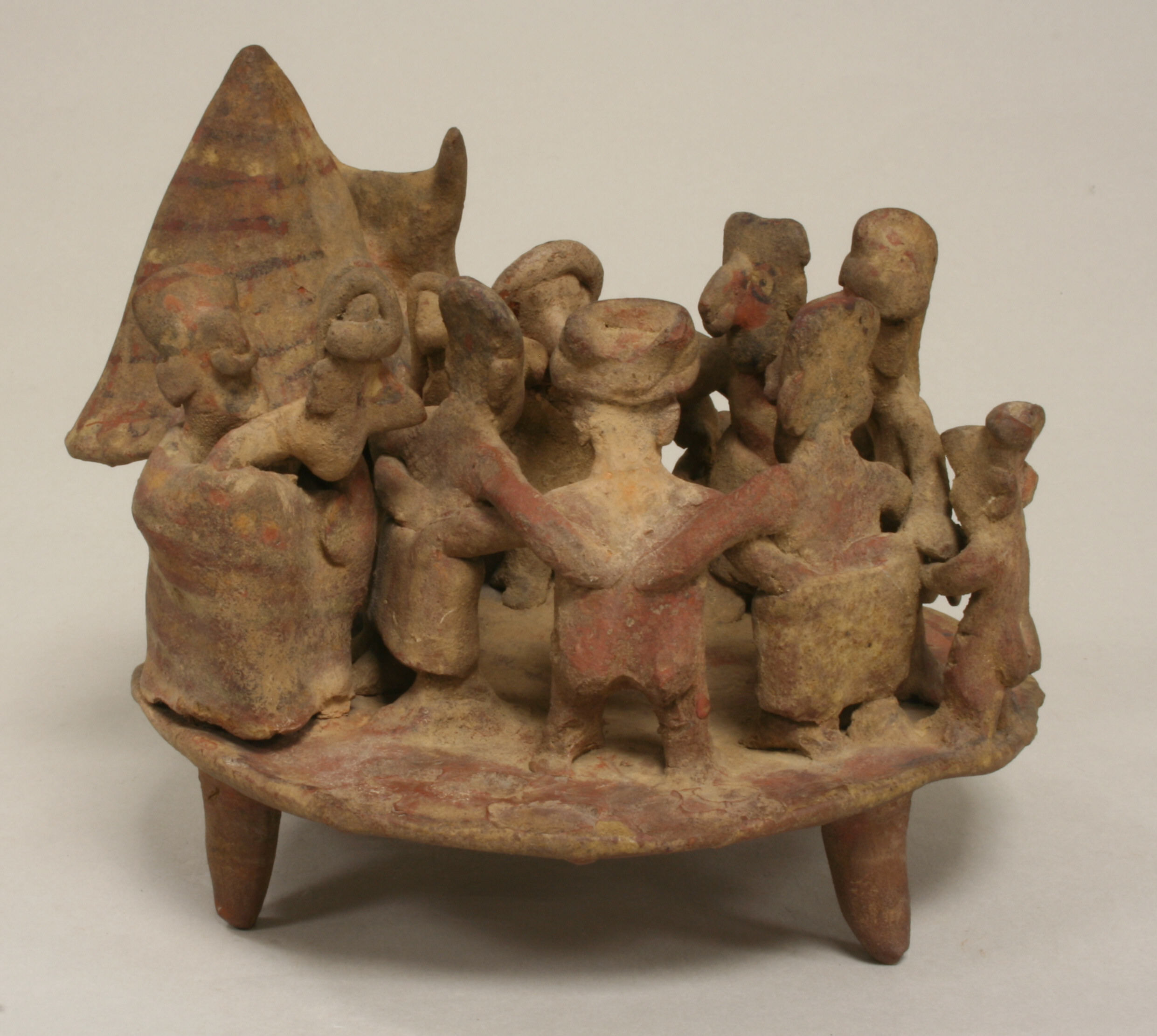Village Scene
Not on view
This ceramic model depicts a lively dance that, like so many of the gatherings seen in Nayarit art, brings the community together to participate and to observe. Seven dancers lock arms and lean in, forming a circle that reflects the shape of the platform itself. Eight other adults and children look on with evident interest. Similar scenes are depicted on other Nayarit models, suggesting that dance rituals, like feasting and the ballgame, were important events in community life. Other models of this type show the circular plaza framed by four identical hipped-roofed buildings set at equal intervals, designating the four cardinal directions. On some examples, a central element, in the form of a ritual pole or a round stepped platform, transforms the space into a metaphor for the Mesoamerican cosmic map, the central element reflecting the multi-level celestial realm (see Pillsbury, Sarro, Doyle, and Wiersema, fig. 40). Similar circular raised platforms, with central radial pyramids and surrounding building foundations, have been discovered at several sites in the nearby state of Jalisco. In this example a single building flanked by spectators, both adults and children, places the focus as much on the interest of the onlookers as on the dancers themselves.
There is no indication of hierarchy among the village inhabitants, although gender and age are clearly distinguished. Of the seven dancers, all adults, three are female; they wear only skirts, and their breasts are clearly depicted. The other four are male, each wearing turban-like headdress. Three pairs of figures and one small individual are placed irregularly around them, suggesting a spontaneous gathering. To the right of the small structure, an adult couple looks on, wrapped together in a single blanket. Two pairs of children, leaning casually on one another, watch from the opposite side. Another child stands just outside the circle, directly across from the small building. He places his hands on the arms of two of the dancers, as if hoping he will be allowed to join them.
Nayarit art celebrates the connections between individuals, and among community members. Male and female figurines representing ancestors or village leaders were often created as pairs, complementary in size and dress (see MMA 2005.255.2, 3). Narrative models depict the wider community at elaborate feasts (see MMA 1979.206.359, 2015.306), playing and observing the ballgame, or engaged in a ritual activity such as the one seen here. These scenes are highly animated, with various figures often touching and gesturing in conversation.
The hand of the artist is evident in the completed work. Each figure was formed individually. Where the artist joined the dancers together, their hands have been flattened as the artist pressed the hand of one figure onto the back of another. The blanket wrapped around two of the watchers, as well as the skirts of the female dancers, were formed by wrapping thick, flat pieces of clay around them. Much of the paint has faded over time, but red, black and cream striations can be detected on clothing, the building roof and walls, and the floor of the plaza.
Patricia J. Sarro 2023
Further reading
Butterwick, Kristi. Heritage of Power: Ancient Sculpture From West Mexico: The Andrall E. Pearson Family Collection. New York, New Haven, London: The Metropolitan Museum of Art, 2004.
Hers, Marie-Areti, ed. Miradas renovadas al Occidente indígena de México. Mexico: Universidad Autónoma de México, 2013.
Pillsbury, Joanne, Patricia Joan Sarro, James Doyle, and Juliet Wiersema. Design for Eternity: Architectural Models from the Ancient Americas. New York: The Metropolitan Museum of Art, 2015, pp. 36–37, figs. 35–37.
Schávelzon, Daniel. Treinta siglos de imágenes: maquetas y representaciones de arquitectura en México y América Central prehispánica. Buenos Aires: Fundación Centro de Estudios para Políticas Públicas Aplicadas, 2004, p. 121.
Townsend, Richard F., ed. Ancient West Mexico: Art and Archaeology of the Unknown Past. Chicago, Art Institute of America, 1998. von Winning, Hasso. Anecdotal Sculpture of Ancient West Mexico. Los Angeles: Ethnic Arts Council of Los Angeles, 1972, no. 28, p. 54.
Due to rights restrictions, this image cannot be enlarged, viewed at full screen, or downloaded.
This artwork is meant to be viewed from right to left. Scroll left to view more.
